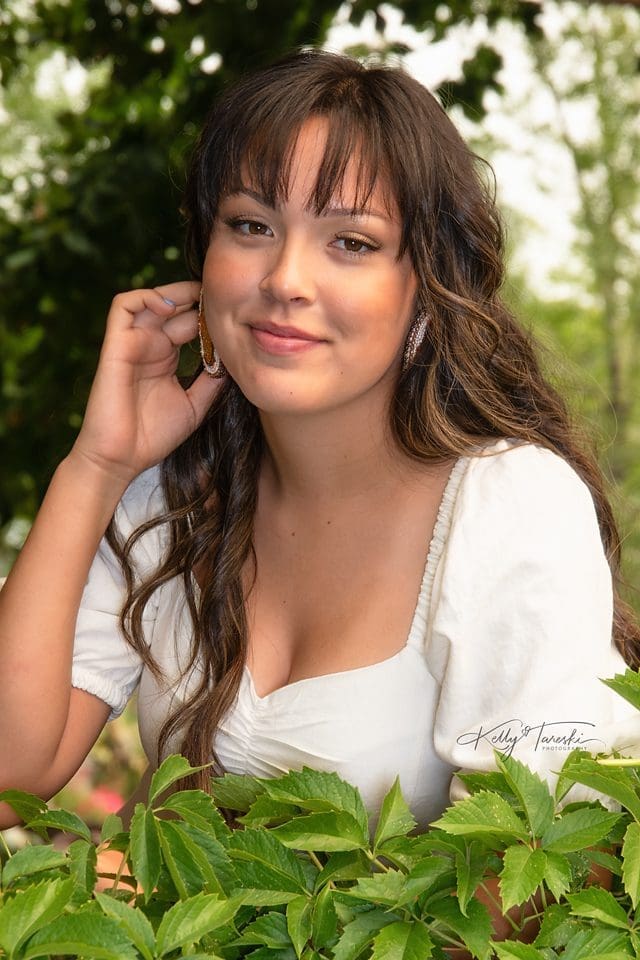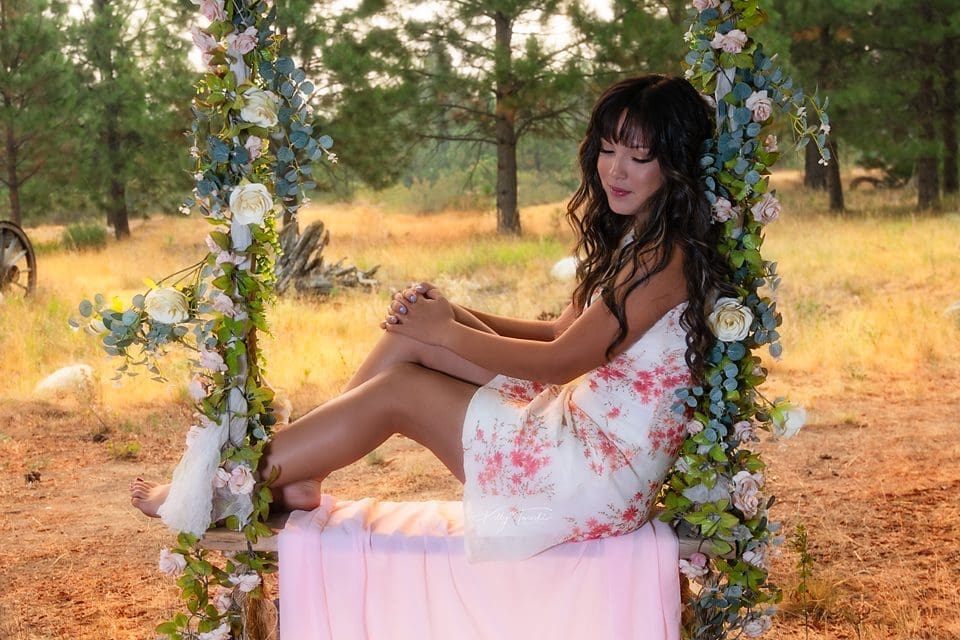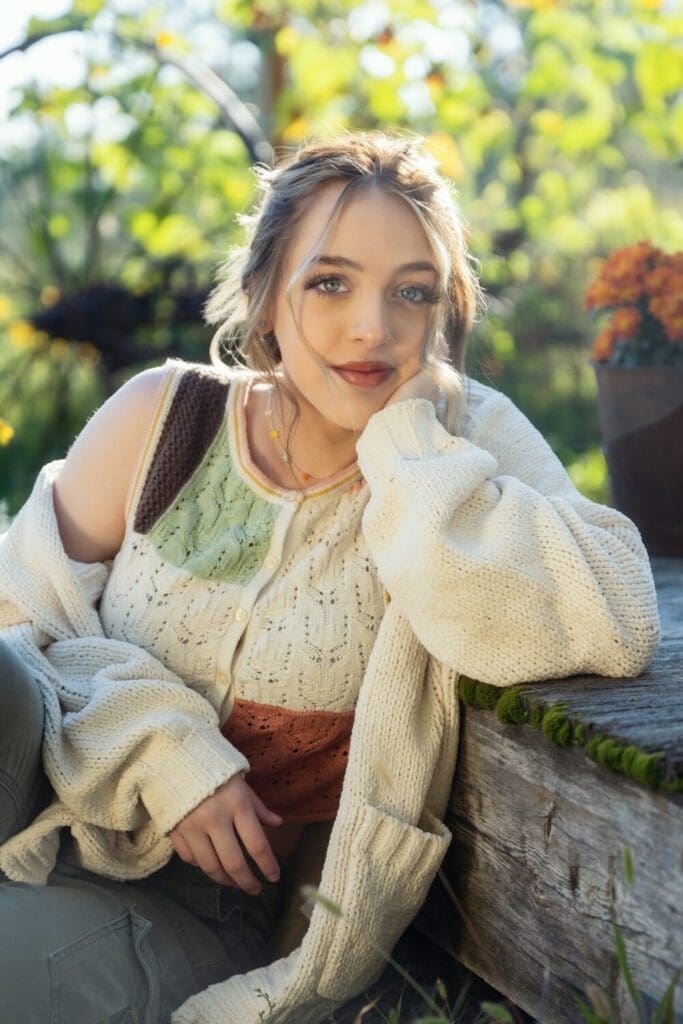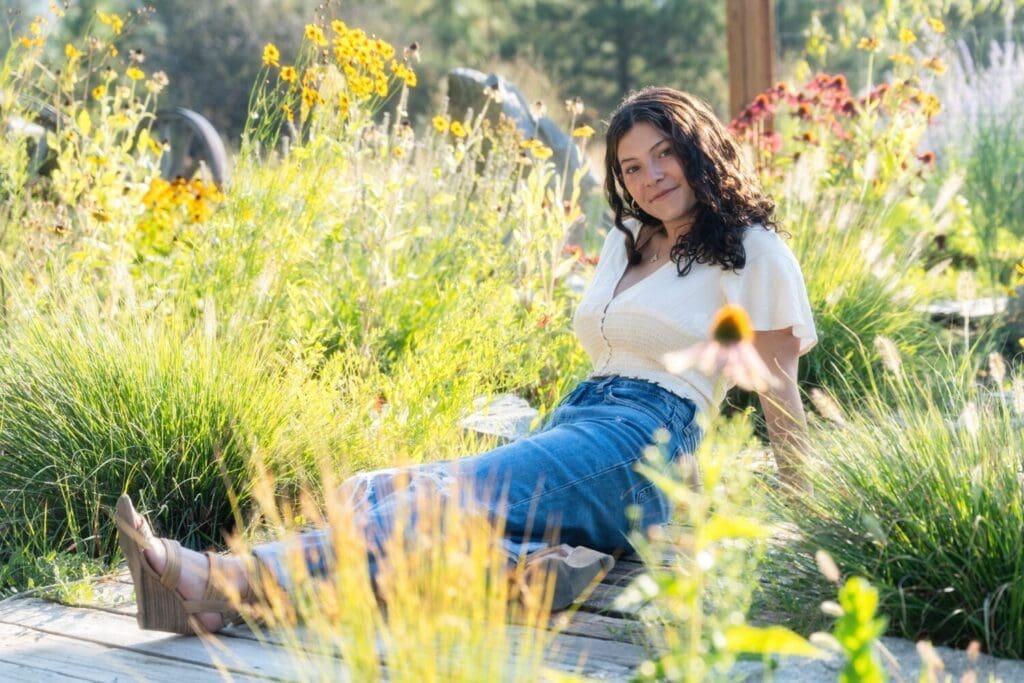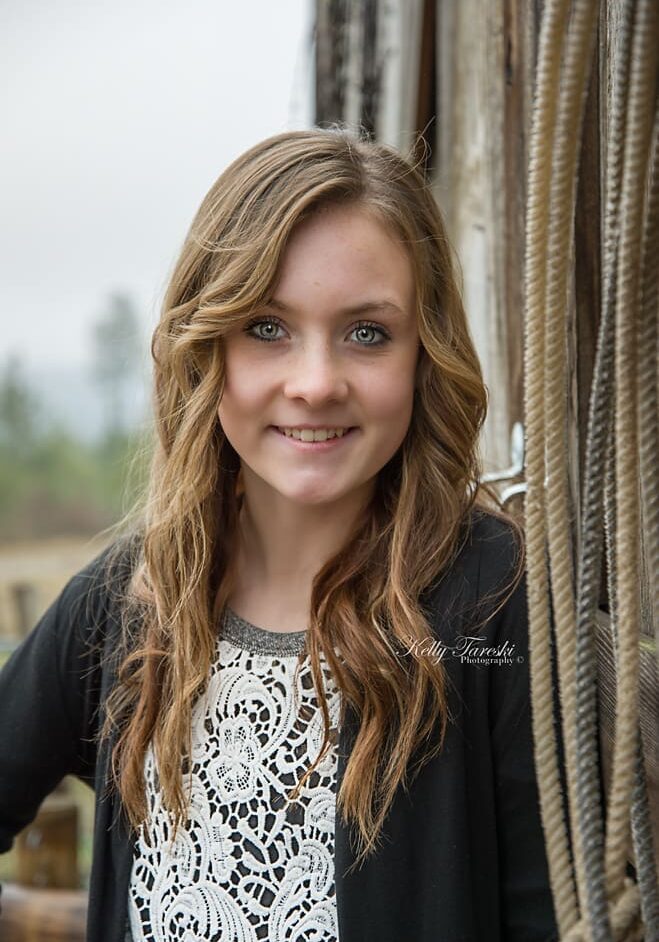
Mastering Natural Light: Techniques for Stunning Outdoor Portraits
Let's Roll!
Hello, fellow photography enthusiasts! I'm Kelly from Kelly Tareski Photography, and today, I'm thrilled to share some insights into one of my favorite aspects of photography: mastering natural light for outdoor portraits. Whether you're a seasoned pro or just starting out, understanding how to harness the power of natural light can elevate your portraits from ordinary to extraordinary. Let's dive into the world of natural light and explore some techniques that will help you capture stunning outdoor portraits.
** Understanding the Basics of Natural Light**
Natural light is the most accessible and versatile tool in a photographer's arsenal. It can be soft and flattering or harsh and dramatic, depending on how you use it. The first step in mastering natural light is understanding its qualities. Natural light changes throughout the day, influenced by the sun's position, weather conditions, and even the time of year. As photographers, we need to be keen observers of these changes to make the most of them in our work.
One of the key aspects of natural light is its direction. Front lighting, where the light source is directly in front of the subject, can create even and flattering illumination. However, it can sometimes result in flat images lacking depth. Side lighting, on the other hand, adds dimension and texture, highlighting the contours of the face. Backlighting, which we'll explore in more detail later, can create a magical halo effect around your subject. Understanding these basics allows you to choose the right lighting setup for the mood and style you want to convey in your portraits.
** Choosing the Right Time of Day for Outdoor Portraits**
Timing is everything when it comes to outdoor photography. The golden hour, which occurs shortly after sunrise and before sunset, is often considered the best time for outdoor portraits. During these times, the sun is low in the sky, casting a warm, soft glow that is incredibly flattering for skin tones. According to a study by the National Institute of Standards and Technology, the color temperature of sunlight during the golden hour is around 3,500 to 4,000 Kelvin, which is ideal for portrait photography.
However, don't limit yourself to just the golden hour. Each time of day offers unique lighting conditions that can be creatively utilized. Midday sun, while harsh, can be tamed with the right techniques, such as using diffusers or seeking shade. Overcast days provide soft, even lighting that eliminates harsh shadows, making them perfect for capturing natural, candid moments. By experimenting with different times of day, you can discover new ways to tell your story through light.
** Utilizing Shadows and Highlights Effectively**
Shadows and highlights are powerful tools in photography that can add drama and depth to your images. When used effectively, they can transform a simple portrait into a work of art. Shadows can create a sense of mystery and intrigue, while highlights can draw attention to specific features or expressions.
One technique I love is using dappled light, where sunlight filters through leaves or other objects, creating interesting patterns of light and shadow on the subject. This can add a whimsical, ethereal quality to your portraits. Another approach is to embrace the contrast between light and shadow, using it to emphasize the subject's features or create a mood. As the legendary photographer Ansel Adams once said, "A true photograph need not be explained, nor can it be contained in words." By mastering shadows and highlights, you can convey emotions and stories that resonate with viewers on a deeper level.
** Mastering the Art of Backlighting**
Backlighting is a technique that can add a magical touch to your outdoor portraits. When the light source is behind the subject, it creates a halo effect that can make your subject stand out against the background. This technique is particularly effective during the golden hour when the sun is low and casts a warm, soft glow.
To master backlighting, position your subject with the sun behind them and adjust your camera settings to expose for the subject's face. This may require some experimentation with exposure compensation or using spot metering to ensure the subject is well-lit. The result is a beautifully backlit portrait with a dreamy, ethereal quality. As photographer Joe McNally once said, "Light makes photography. Embrace light. Admire it. Love it. But above all, know light." By embracing backlighting, you can create portraits that are both captivating and memorable.
** Incorporating Reflectors and Diffusers**
Reflectors and diffusers are essential tools for any outdoor photographer. They allow you to manipulate natural light to achieve the desired effect. Reflectors bounce light back onto the subject, filling in shadows and adding a touch of warmth. They come in various colors, such as silver, gold, and white, each offering a different effect. Silver reflectors provide a bright, neutral light, while gold reflectors add a warm, golden glow.
Diffusers, on the other hand, soften harsh sunlight, creating a more even and flattering light. They are particularly useful during midday shoots when the sun is at its harshest. By placing a diffuser between the sun and your subject, you can create a soft, diffused light that eliminates harsh shadows and highlights. As you experiment with reflectors and diffusers, you'll discover how these simple tools can transform your outdoor portraits.
** Adapting to Changing Weather Conditions**
Weather can be unpredictable, but as photographers, we must learn to adapt and make the most of it. Overcast days, for example, provide soft, even lighting that is perfect for capturing natural, candid moments. The clouds act as a giant diffuser, eliminating harsh shadows and creating a flattering light for portraits.
Rainy days can also offer unique opportunities for creativity. Reflections in puddles, raindrops on leaves, and the soft, muted colors of a rainy day can add a touch of magic to your portraits. Embrace the weather and use it to tell a story. As the saying goes, "There is no such thing as bad weather, only different kinds of good weather." By adapting to changing weather conditions, you can capture stunning outdoor portraits that are both unique and memorable.
Thats a Wrap!
Mastering natural light is an art that requires observation, experimentation, and creativity. By understanding the basics of natural light, choosing the right time of day, utilizing shadows and highlights, mastering backlighting, incorporating reflectors and diffusers, and adapting to changing weather conditions, you can create stunning outdoor portraits that captivate and inspire. So grab your camera, head outside, and let the magic of natural light guide you on your photographic journey. Happy shooting!
Mastering Natural Light: Techniques for Stunning Outdoor Portraits
Related Articles to Education
-
Preparing For Your Family Photos – Spokane
-
Spokane Photography – Showcasing a Region
-
Spokane Photographers – How To Choose
-
More about Children’s Photography In Spokane
-
What is a Professional Photographer?
-
The Importance of Senior Portrait Photography Spokane
-
Legacy Portrait Photography in Spokane
-
Prepare with Pinterest Spokane Boudoir
-
Choosing Professional Portrait Photography Spokane
-
The Importance of Children’s Photography in Spokane
-
How to Choose A Photographer In Spokane
-
Indoor Photography Studios Spokane – Kelly Tareski Photography
-
How to choose the right photographer
-
Benefits of Accreditation for Photographers
-
Why Hiring An Accredited Photographer Matters
-
My Journey to Accreditation – The Portrait Masters
-
Elevating Spokane Modeling Photography
-
Ultimate Survival Guide for a Family Photo Shoot
-
Top Ten Questions to Ask a Professional Photographer
-
Your Guide To Choosing A Professional Photographer
-
A Journey through 10 Diverse Photography Genres
-
Hair and Makeup for Portrait Photography Spokane – Kelly Tareski Photography
-
A Comprehensive Guide to Capturing Stunning Portraits
-
The Four Seasons of Portrait Photography
-
The Difference Between Graduation Photos and Senior Pictures
-
Black and White VS Color Photography
-
The History Of Spokane Photographers
-
Top Ten Life Events That Call for a Professional Photographer
-
The Evolution of Photography
-
A Labor of Love-Building The Warehouse Door Garden Gate
-
Five Tips for Nailing Your Boudoir Photography Shoot
-
Lifestyle Photography Sessions Explained
-
The Ultimate Guide to Capturing the Perfect Family Portrait
-
Step into the Dramatic Grey Studio
More Education Posts
-
Whimsical White Studio – How I Create Amazing Photos
-
My Magical Retro-Themed Cabin Studio
-
Get Creative! Five Unique Ways to Personalize Your Family Photos
-
Five Birthday Milestones That Call For Professional Photography
-
Five Tips for Gorgeous Outdoor Photos
-
Tips to Look Your Best in Professional Photos
-
The Importance of a Photography Consultation
-
Five Reasons You Need Professional Prints For Your Photos
-
A Photography Reveal Session Explained
-
5 Hair and Makeup Tips for the Perfect Photography Session
-
6 Senior Photo Shoot Mistakes to Avoid in 2023
-
The Importance of Editing for Professional Photography
-
A Glimpse Into The Past at Kelly Tareski Photography - 2019
-
Being a Photographer in Washington State - Spokane
-
Why Quality Equipment is Essential in Photography
-
Natural Light and Studio Lighting for Photography
-
Enhancing Photography With Natural Light
-
Five Tips for Using Studio Lighting in Photography
-
Understanding the Cost of Professional Photography
-
Amazing Metal Prints for Your Home
-
Canvas Prints - Affordable and Beautiful
-
Bring Vintage Into Your Life With The Retro Viewer
-
Photographers In North Spokane Washington
-
Photographer Near Me - Spokane Washington
-
Photographers Near the Spokane Valley
-
Professional Photographers Near Cheney Washington
-
Professional Photographers Near Medical Lake Washington
-
Professional Photographers Near Reardan Washington
-
Professional Photographers Near Davenport Washington
-
Professional Photographers Near Deer Park Washington
-
Professional Photographers Near Liberty Lake Washington
-
Professional Photographers Near Airway Heights Washington
-
Professional Photographers Near Millwood Washington
-
Professional Photographers Near Chewelah Washington
-
Professional Photographers Near Colville Washington
-
Professional Photographers Near Newport Washington
-
Professional Photographers Near Kettle Falls Washington
-
Professional Photographers Near Mead Washington
-
Professional Photographers Near Springdale Washington
-
Professional Photographers Near Spangle Washington
-
Professional Photographers Near Valleyford Washington
-
Professional Photographers Near Rockford Washington
-
Professional Photographers Near Fairfield Washington
-
Professional Photographers Near Rosalia Washington
-
Professional Photographers Near Colfax Washington
-
Professional Photographers Near Loon Lake Washington
-
Professional Photographers Near Harrington Washington
-
Professional Photographers Near Tekoa Washington
-
Professional Photographers Near Chattaroy Washington
-
Professional Photographers Near Colbert Washington
-
Professional Photographers Near Northport Washington
-
Professional Photographers Near Metaline Falls Washington
-
Professional Photographers Near Post Falls Idaho
-
Professional Photographers Near Coeur d'Alene Idaho
-
Professional Photographers Near Rathdrum Idaho
-
Professional Photographers Near Blanchard Idaho
-
Mastering the Art of Sexy Professional Photography
-
10 Tips for Shooting Better Portrait Photography
-
5 Tips Using the Nikon Z7ii Camera for Portrait Photography
-
Seven Tips For Natural Light Photography
-
Mastering Natural Light: Techniques for Stunning Outdoor Portraits
-
How to Prepare for Your First Professional Photoshoot
-
Capturing Emotion: The Art of Candid Photography
-
The Ultimate Guide to Choosing the Perfect Photography Studio
-
Top 10 Photography Tips for Beginners
-
How to Pose Like a Pro: Tips for Flattering Portraits
-
Understanding Camera Settings: A Beginner's Guide to Manual Mode
-
The Role of Props in Photography: Enhancing Your Images
-
10 Creative Ideas for Unique Family Portraits
-
How to Price Senior Portrait Sessions
-
The Benefits of Hiring a Professional Photographer for Your Event
-
Why Is Professional Branding Crucial for Success?
-
Exploring Different Photography Styles: Which One Suits You?
-
The Magic of Golden Hour: Why Timing Matters in Photography
-
How to Create a Photography Portfolio That Stands Out
-
The Evolution of Photography: From Film to Digital
-
Understanding Composition: The Rule of Thirds and Beyond
-
The Impact of Backgrounds: Choosing the Right Photo Setting
-
How to Choose the Right Outfits for Your Photoshoot
-
Mastering Elegant Boudoir Photography Techniques
-
How to Capture Stunning Landscape Photos: Tips and Techniques
-
The Power of Black and White Photography: When Less is More
-
The Art of Storytelling Through Photography
-
How to Photograph Children: Capturing Genuine Smiles and Moments
-
Human Branding: Connecting Professionally
-
Advancing Your Skills: Professional Photography Education
-
Elegant Boudoir: Empowering Through Photography
-
How to Create Timeless Photos and Portraits
-
Art Photography Printing: Bringing Images to Life
-
Capturing Timeless Portraits Tips and Techniques
-
Post-Production Photography: Enhancing Your Images
-
The Importance of Lighting in Photography: Natural vs. Artificial
-
The Role of Makeup in Photography: Preparing for Your Close-Up
-
The Importance of Printing Your Photos: From Digital to Tangible
-
High School Senior Photos: Your Comprehensive Guide
-
What to Wear: Men's Engagement Photo Outfits
-
How to Master Creative Black and White Portrait Photography
-
Capturing Memories: Senior Photos with Guitar
-
Breaking the Rules: Creative Photography Techniques to Try
-
Enhancing Your Home Dacor with Custom Photography Prints
-
Creative Couples Photography: Capturing Connection and Chemistry
-
Stunning Nighttime Portraits: Capturing the Beauty of the Dark
-
Exploring Minimalism in Photography: Less is More
-
Embracing Imperfections: Capturing Real Moments in Photography
-
Prepping for a Fitness Photoshoot: How to Look Your Best
-
Turning Your Photography Hobby into a Business
-
Capturing the Connection: Tips for Couple's Lifestyle Photography
-
How to Capture Soft, Natural Light Indoors
-
Going Minimal: How Less Can Be More in Photography
-
Highlighting Unique Details: Close-Up Portrait Ideas
-
The Art of Arranging Family Photos for Display
-
How to Achieve a Dreamy Look with Backlit Photography
-
Building Confidence: How to Feel Comfortable on Camera
-
10 Tips for Photographing Action and Motion in Portraits
-
Capturing the Perfect Reaction: Tips for Engagement Photography
-
How to Capture Creative Self-Portrait Photography
-
How to Prepare for Senior Studio Pictures
-
The Secret to Relaxed and Natural-Looking Portraits
-
A Beginner's Guide to Understanding Camera Settings [2025]
-
The Ultimate Checklist for a Stress-Free Portrait Session [Guide]
-
Advanced Photography Skills to Take Your Photos to the Next Level
-
Mastering Natural Light for Breathtaking Portraits
-
Fun and Natural Photo Ideas for Couples Who Hate Posing




